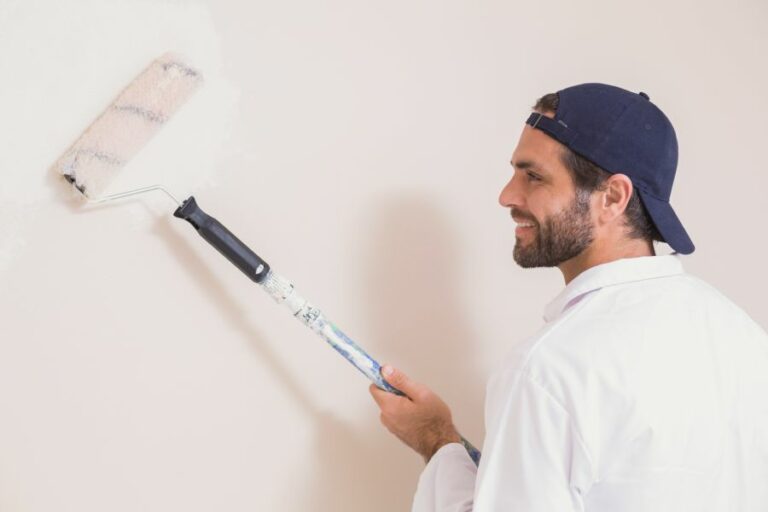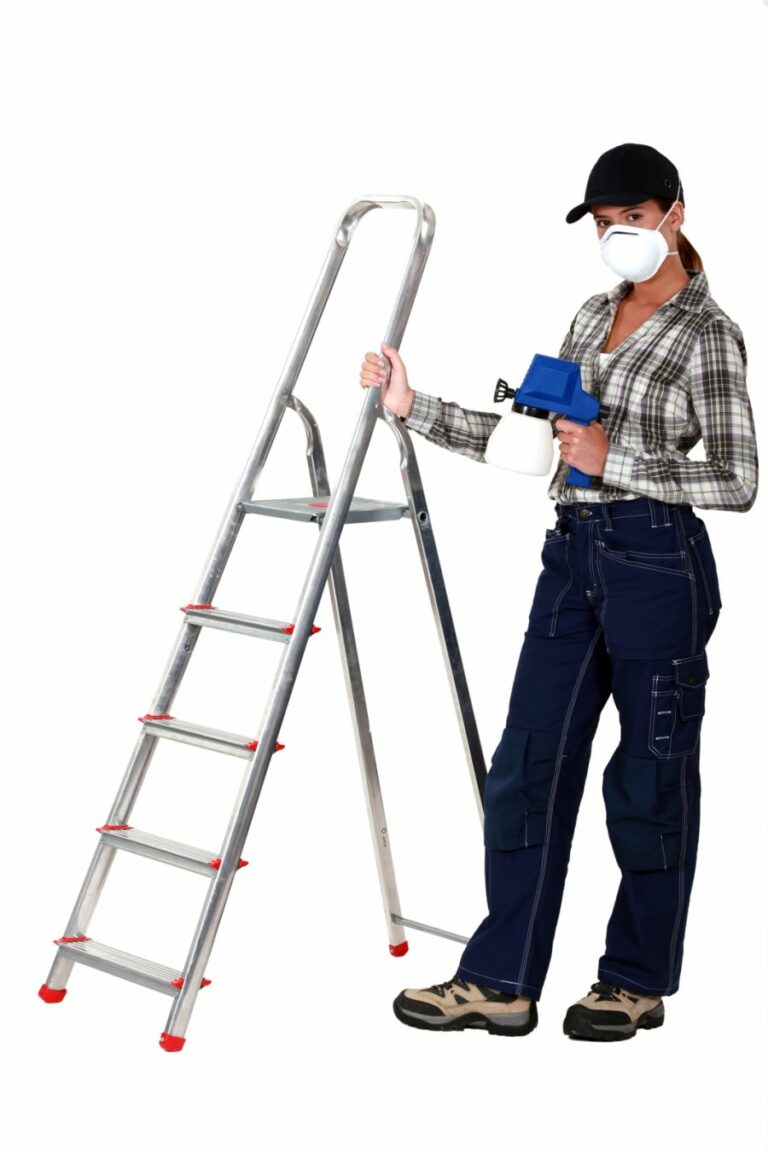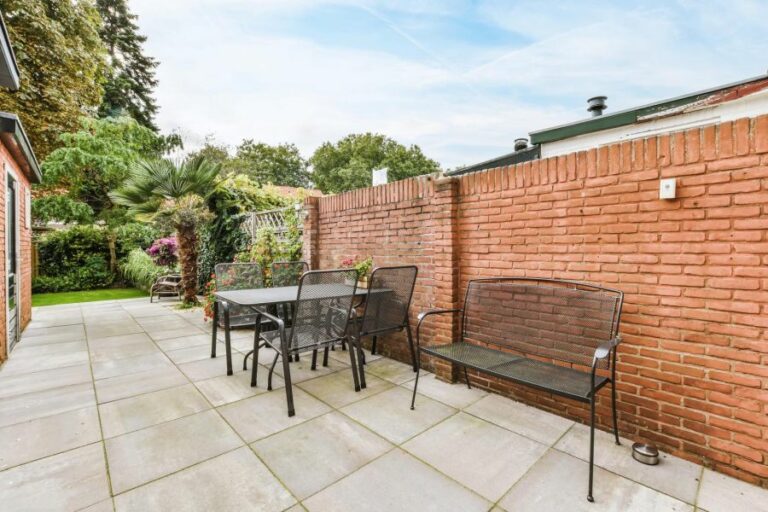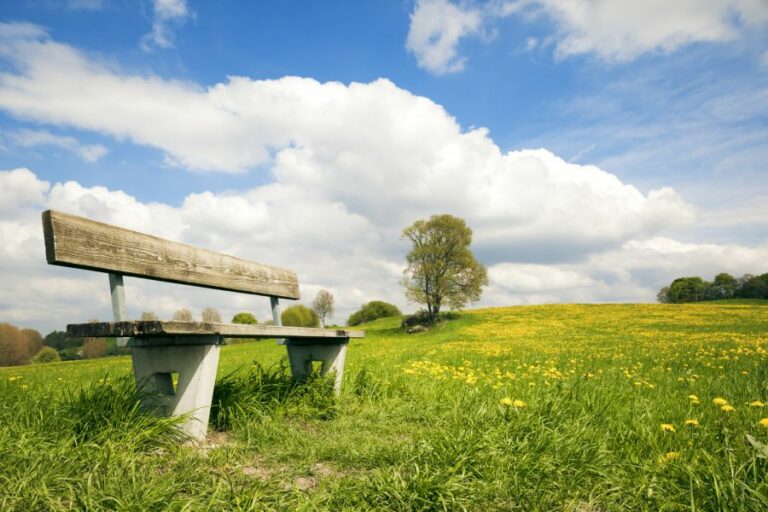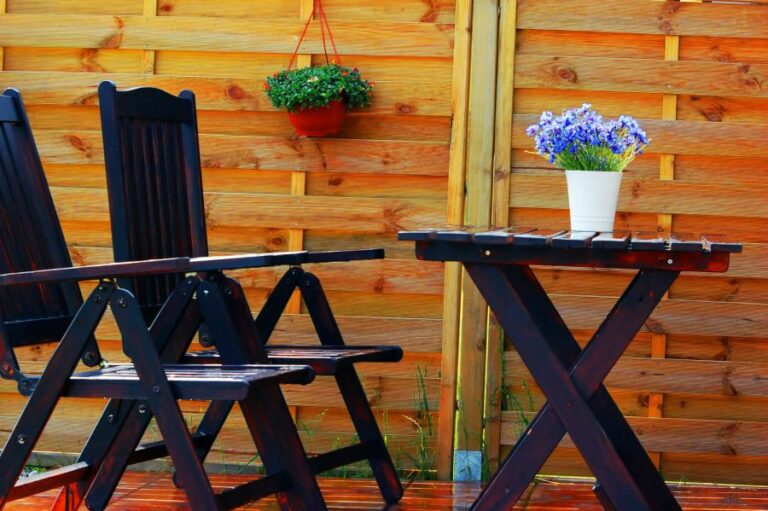Outdoor Paint For Glass, 25 Things You Should Know
Are you looking to spruce up your glass surfaces with a fresh coat of paint? Look no further, as we have covered you with the perfect outdoor paint for glass. With our guidance, you’ll be able to find the ideal paint that not only looks great but also withstands the elements.
Outdoor paint for glass:
Outdoor glass surface paint is a versatile medium for murals, signage, decorative accents, and craft projects. It offers durability, weather resistance, and vibrant pigmentation. Common options include enamel paints, acrylic paints, and paint markers. Proper surface preparation, application techniques, and maintenance ensure long-lasting, professional results.

Discover the incredible world of outdoor paint for glass! Keep reading to learn about its diverse applications, types, and techniques, as well as expert tips for creating eye-catching, durable artwork. Unleash your creativity and explore the endless possibilities of glass painting.
Contents
- 1 Exterior Glass Surface Paint
- 2 What Type of Paint Should You Utilize for Outdoor Glass Surfaces?
- 3 Is it Possible to Apply Paint on Exterior Glass Surfaces?
- 4 Determining the Optimal Paint Choice for Exterior Window Glass
- 5 Which Type of Paint Provides Waterproof Properties on Glass Surfaces?
Exterior Glass Surface Paint
Outdoor paint for glass is a versatile medium that offers several unique properties such as durability, weather resistance, and vibrant pigmentation. Its wide range of applications includes murals, signage, decorative accents, and various craft projects.
• Choosing the Right Outdoor Paint for Glass
When selecting the appropriate outdoor paint for glass, it’s essential to consider factors such as adhesion, weather resistance, drying time, and finish. This section will discuss some popular outdoor glass paint options, each with its strengths and weaknesses.
– Enamel Paints
Enamel paints are a popular choice for outdoor glass applications due to their durability and long-lasting finish. They are oil-based and dry to a glossy or semi-glossy finish, which provides excellent water and weather resistance.
Additionally, they come in a wide range of colors, making them perfect for vibrant murals and decorative accents.
One drawback of enamel paints is that they have a longer drying time, often taking up to 24 hours to cure fully. Additionally, cleaning tools after using enamel paint requires the use of solvents, which may be bothersome to some users.
– Acrylic Paints
Acrylic paints offer an alternative to enamel paints, as they dry faster and clean up easily with water. They are water-based and have become increasingly popular for outdoor glass applications due to their flexibility, non-toxic formulation, and resistance to UV rays.
However, it’s crucial to note that not all acrylic paints perform well on glass, so it’s essential to choose acrylic paint specifically designed for glass applications. Additionally, acrylic paint may require sealants or varnishes to provide optimum weather resistance.
– Paint Markers
Paint markers are a convenient way to apply outdoor paint for glass, as they come in a pen form that allows for fine detailing and controlled application. They typically contain either oil-based or acrylic paint and dry quickly to a permanent, weather-resistant finish.
One drawback to using paint markers is that the color range may be more limited than other glass paint options. Additionally, markers may not provide even a finish compared to traditional brush application methods.
• Proper Surface Preparation and Application Techniques
To ensure a successful paint application on glass, it’s essential to prepare the surface correctly and follow appropriate application techniques.
– Cleaning the Glass Surface
Before applying outdoor paint to glass, it’s crucial to clean the surface thoroughly. Use a glass cleaner or rubbing alcohol to remove any dust, dirt, or residue. After cleaning the surface, it’s recommended to lightly sand the glass with fine-grit sandpaper to create a slight roughness that will enhance adhesion.
– Applying Primer
For some outdoor glass paint applications, it may be beneficial to use a primer or glass paint base coat. Primers create a rough surface that improves adhesion and can make colors appear more vibrant when applied.
However, for most projects, applying paint directly to the glass surface will yield satisfactory results.
– Proper Application Techniques
When applying outdoor paint for glass, it’s vital to use consistent, even strokes to achieve a smooth finish. For detailed work, consider using brushes and paint markers specifically designed for glass applications. For coverage of larger areas, consider using a foam roller or sponge applicator.
Apply the paint in thin, even layers, allowing each coat to dry before applying additional coats. This will ensure proper adhesion and create a more polished, professional final product.
• Sealants and Top Coats
Depending on the type of paint used, it may be necessary or recommended to apply a sealant or top coat to protect the painted surface and enhance longevity. Always follow the paint manufacturer’s recommendations regarding sealants and top coats.
• Care and Maintenance
To ensure the long-lasting beauty of your outdoor glass paint project, it’s essential to practice proper care and maintenance. Regular cleaning with a non-abrasive cloth or squeegee can help maintain the clarity of your glass surface.
– In Conclusion
Whether you’re looking to add a personal touch to your home, create eye-catching signage or explore creative crafting possibilities, outdoor paint for glass provides a versatile and durable solution.
With the proper selection of paint, surface preparation, application techniques, and ongoing care, you can create stunning and long-lasting artwork for various outdoor glass surfaces.
What Type of Paint Should You Utilize for Outdoor Glass Surfaces?
When it comes to painting outdoor glass surfaces, it’s crucial to select the appropriate type of paint.
• Acrylic Paint for Outdoor Glass
Acrylic paint is a highly recommended option for painting outdoor glass surfaces, as these paints are known for their flexibility, durability, and resistance to harsh weather conditions.
They are also easy to apply and have low levels of toxic fumes, making them an excellent choice for both beginners and professionals.
When selecting acrylic paint for your project, ensure that it is formulated specifically for use on outdoor surfaces. Some reputable brands include Golden, Liquitex, and DecoArt Patio Paint.
These paints are designed to provide optimal adhesion, UV resistance, and water resistance, ensuring a long-lasting finish on your glass surfaces.
– Applying Acrylic Paint to Outdoor Glass
Before you begin the application process, thoroughly clean the glass surface with rubbing alcohol or a glass cleaner. This will remove any dirt, dust, or grease, which may prevent the paint from adhering properly.
Apply the acrylic paint using either a brush, sponge, or roller, depending on the desired effect. For a smooth finish, use a brush with soft, synthetic bristles or a foam roller. If you prefer a textured look, use a sponge or a roller with a textured surface.
Follow the manufacturer’s drying time recommendations, and apply a second coat if necessary. To ensure maximum durability, finish with a clear acrylic sealer, especially if the painted surface will be in a high-traffic area or exposed to extreme weather conditions.
• Glass and Tile Medium
Glass and tile mediums are specialized paints designed specifically for use on glass and tile surfaces. They are known for their excellent bond strength and durability, making them a popular choice for outdoor glass painting.
When selecting a glass and tile medium, be sure to choose one that is specifically designed for outdoor use. Popular brands include FolkArt Enamels, Delta Creative, and Pebeo Vitrail.
– Applying Glass and Tile Medium to Outdoor Glass
Just like acrylic paint, start by thoroughly cleaning the glass surface with rubbing alcohol or a glass cleaner. Apply the glass and tile medium using a brush, sponge, or roller, depending on the desired finish. Multiple coats can be applied for increased coverage and durability.
Follow the manufacturer’s instructions for drying and curing times. Some glass and tile mediums require heat-setting, which involves curing the painted glass in an oven at a low temperature. This step helps ensure that the paint is fully cured and resistant to weather conditions.
• Epoxy Paint for Outdoor Glass
Epoxy paint is another suitable option for painting outdoor glass surfaces. Epoxies create a strong, durable, and chemical-resistant finish, making them ideal for outdoor applications. However, epoxy paint has a limited working time and can be difficult to apply, so it may not be the best option for beginners.
To achieve the best results with epoxy paint, select a product that offers UV resistance, which will help protect the paint from fading and other damage due to sun exposure. A well-known brand for outdoor epoxy paint is Rust-Oleum.
– Applying Epoxy Paint to Outdoor Glass
Before applying epoxy paint, make sure the glass surface is clean, dry, and free of any dust or contaminants. Epoxy paint typically consists of two parts: a resin and a hardener. Mix the two components according to the manufacturer’s instructions.
Apply the epoxy paint with a brush, roller, or spray gun, depending on the brand and your personal preferences. Keep in mind that epoxy paint has a limited working time, so work quickly and efficiently.
Allow the epoxy paint to dry and cure according to the manufacturer’s instructions. Drying time may vary depending on the product, temperature, and humidity.
• Maintaining and Cleaning Outdoor Painted Glass
Regular maintenance and cleaning are essential for ensuring that your painted outdoor glass remains in pristine condition. For general cleaning, use a soft cloth or sponge with a mild glass cleaner or soap and water. Rinse the surface with water and dry with a lint-free cloth to prevent water spots.
Inspect the painted glass regularly for any signs of damage or wear, such as peeling or chipping paint. If necessary, touch up the affected area with the appropriate paint, followed by a clear sealer for added protection.
In conclusion, acrylic paint, glass and tile medium, and epoxy paint are all suitable options for painting outdoor glass surfaces.
Consider factors such as durability, ease of application, and finish when selecting the right paint for your project. And always remember to follow the manufacturer’s instructions for the best possible results.
Type of Paint | Description |
|---|---|
Acrylic Enamel | Provides a durable and weather-resistant finish, suitable for outdoor glass surfaces. |
Glass Paint | Specifically designed for use on glass surfaces, adheres well to outdoor glass. |
Spray Paint | Can be used on outdoor glass, make sure to choose one specifically formulated for glass surfaces. |
Oil-Based Paint | Offers long-lasting protection and durability on outdoor glass surfaces. |
Exterior Latex Paint | Adheres to glass, but may require priming and additional surface preparation for optimal results. |
Is it Possible to Apply Paint on Exterior Glass Surfaces?
Painting exterior glass surfaces may be a relatively uncommon practice, but it offers a number of potential benefits. From boosting privacy and reducing glare to imparting a unique decorative touch, there are several reasons to explore this DIY project.
• Choosing the Right Paint for Exterior Glass
To achieve a professional-looking result, it’s crucial to use paint specifically designed for glass surfaces. Exterior glass paint should possess the following characteristics:
- Water-based: Water-based paints are easier to clean up and provide better performance on glass than oil-based alternatives.
- UV-resistant: Exposure to sunlight can cause paint to fade, crack, or peel over time. A UV-resistant paint formulation helps prevent such damage.
- Non-toxic: Since paint will be in direct contact with the glass, you should choose a non-toxic formulation that is safe for you and the environment.
- Adhesive properties: The paint must adhere well to the glass surface, resisting chipping and peeling. Some glass paints may require a primer or bonding agent to enhance adhesion.
Apart from these basic requirements, also consider factors such as color, opacity, and finish (glossy or matte) to suit your project’s specific aesthetic goals. Frosted or translucent glass paints are a popular choice for windows, as they obscure the view without completely blocking light transmission.
An example of a suitable paint product for exterior glass surfaces is the Rust-Oleum Specialty Frosted Glass Spray which is a semi-transparent finish ideal for creating a frosted glass effect.
• Preparing the Glass Surface
Before applying paint to the exterior glass, ensure that the surface is clean and free of debris, grease, or any other contaminants that could affect paint adherence. Follow these steps to prepare the glass for painting:
- Start by removing loose dirt, dust, and debris using a soft-bristled brush.
- Clean the glass with a mix of warm water and a few drops of mild dish soap, applied with a clean sponge or cloth.
- Rinse the surface thoroughly to remove soap residue, then dry it with a lint-free cloth.
- For stubborn grease, grime, or other contaminants, you may need to use a specialized glass cleaner or degreaser.
- If your paint product requires the use of a primer or bonding agent, follow the manufacturer’s instructions to apply it to the glass.
• Painting Technique: Brush vs. Spray
There are two primary methods for applying paint to a glass surface: using a brush or a spray. Both methods have their specific advantages and drawbacks.
– Brush Application
Brush application is suitable for smaller-scale projects or when detailing is required. While brushes offer better control, they may leave visible brushstroke marks or lead to uneven paint thickness. To counteract these issues, use a high-quality brush, start with lighter layers, and apply the paint in even, long strokes.
– Spray Application
Spray application is ideal for larger glass surfaces or in cases where a smooth, even finish is desired. To avoid drips and uneven coverage, it’s important to maintain a consistent distance and speed while spraying.
Be aware that spray painting can potentially lead to overspray or paint drift, so take necessary precautions to cover or mask areas that need to be protected.
• Proper Paint Curing and Drying
Allowing the paint to dry and cure properly is essential to achieving a durable, even finish. The instructions on your paint product will provide specific details about drying time and curing conditions. However, some general guidelines include the following:
- Apply the paint in thin layers, allowing each layer to dry before applying the next. This helps prevent paint from developing cracks or bubbles.
- Ensure the painted glass surface is protected from dust, moisture, or other elements that could affect the paint during the curing process.
- Be patient and let the paint cure for the recommended time before touching or exposing the glass to potential sources of damage. Curing times for glass paint can range from a few hours to several days.
• Maintaining Your Painted Exterior Glass
After investing time and effort into painting your exterior glass, proper maintenance is key to ensuring a long-lasting finish.
Dust the painted surface regularly to prevent dirt accumulation, and clean it with mild soap and water as needed. Avoid using harsh chemicals or abrasive cleaning tools, as they could damage the paint.
In conclusion, painting exterior glass is a feasible and versatile project that can provide both functional and aesthetic benefits.
By selecting the right type of paint, preparing the surface thoroughly, applying paint with care, and adhering to proper curing and maintenance procedures, you can achieve a professional and durable finish that will stand the test of time.
| Can you paint the exterior glass? |
|---|
| Yes, painting exterior glass is possible using specialized glass paint products or techniques. However, it is essential to thoroughly clean the glass surface, choose the right paint, and follow proper application steps for the best results. |
Determining the Optimal Paint Choice for Exterior Window Glass
Having a fresh coat of paint on your outdoor window glass not only enhances the beauty of your home but also serves as a protective layer for your windows. But with several options available in the market, choosing the right paint for your outdoor window glass can be confusing.
• Factors to Consider When Choosing Paint for Outdoor Window Glass
Before diving into the specific paints, consider these important factors when selecting the right paint for your outdoor window glass:
– Durability
Choose a paint that is strong enough to withstand harsh weather conditions such as strong winds, heavy rain, and extreme sunlight. It should not peel off or fade over time, maintaining its appearance and protecting your windows for years to come.
– UV Resistance
Your window glass will be exposed to sunlight for the most part of the day, which could cause the paint to fade quickly. The best paint for your outdoor window glass will, therefore, be one with high UV resistance.
– Flexible and Moisture Resistant
The paint should be able to expand and contract with the window glass’s natural expansion and contraction due to changes in temperature. Additionally, it should be moisture-resistant to prevent any water damage to your window glass.
– Ease of Application
Quality paint should be easy to apply to the glass surface, ensuring a smooth finish with minimal effort.
• Recommended Types of Paint for Outdoor Window Glass
There are several types of paint that will work well on outdoor window glass. Based on the factors mentioned above, these are the most recommended options:
– Acrylic Paint
Acrylic paint is an excellent choice for outdoor window glass due to its durability and resistance to UV rays. It also has impressive flexibility, ensuring that the painted glass will not crack or peel in fluctuating temperatures.
Additionally, acrylic paint is water-resistant, making it perfect for protecting your window glass against moisture damage.
One example of quality acrylic paint is Golden Acrylics Heavy Body. These paints have exceptional durability and UV resistance and are easy to apply to glass surfaces.
– Glass Paint
Glass paint is specifically designed for painting on glass surfaces and boasts features tailored for this purpose. Glass paint usually offers excellent UV resistance, durability, and moisture resistance. This paint creates a smooth, glossy finish that adheres well to the glass surface.
A popular example of suitable glass paint is the Pebeo Vitrea 160. It comes in different colors and is specifically designed for painting on glass surfaces exposed to outdoor conditions.
– Exterior Latex Paint
Exterior latex paint can also be used on outdoor window glass due to its durability and moisture-resistant properties. Additionally, it has good adhesion and flexibility.
An example of exterior latex paint suited for window glass is the Benjamin Moore Regal Select Exterior. This paint combines durability, UV protection, and ease of application to make it ideal for outdoor window glass.
– Enamel Paint
Enamel paint provides a durable, weather-resistant, and glossy finish that works well on outdoor window glass surfaces. It is available in both water-based and oil-based formulations, although water-based enamel paint is easier to clean up and has faster drying times.
A recommended enamel paint for window glass is Rust-Oleum Stops Rust Protective Enamel. This paint offers excellent durability, UV resistance, and a smooth, glossy finish.
• Proper Preparation and Application
To ensure the best results when painting your outdoor window glass, follow these steps:
- Clean the glass thoroughly with a glass cleaner or a mild soap solution to remove any dirt or debris.
- Lightly sand the glass surface to improve adhesion, and then wipe off any dust with a clean cloth.
- Apply a glass primer, such as the Krylon Glass Primer, which will help the paint adhere better to the glass surface.
- Allow the primer to dry according to the manufacturer’s guidelines.
- Apply the chosen paint with a suitable brush, roller, or airbrush, following the manufacturer’s instructions on thinning and application.
- Allow the paint to dry completely before applying any additional coats, if necessary.
• Conclusion
Choosing the best paint for your outdoor window glass is crucial, as it will not only improve the appearance of your home but also provide protection against harsh weather conditions.
Based on durability, UV resistance, moisture resistance, and ease of application, acrylic paint, glass paint, exterior latex paint, and enamel paint are the best options to consider. Remember to prepare and apply the selected paint properly to achieve the best results.
With the right paint choice and application, your window glass will look not only great but also last for years under the most challenging outdoor conditions.
| What is the best paint for outdoor window glass? | |||
|---|---|---|---|
| Paint Type | Brand | Features | Estimated Price |
| Acrylic Latex Paint | Benjamin Moore Aura Exterior | Durable, excellent adhesion, mildew resistant | $70 per gallon |
| Oil-based Paint | Rust-Oleum Protective Enamel | Resistant to weather and corrosion, glossy finish | $30 per quart |
| Water-based Paint | Behr Premium Plus Exterior | Low VOC, easy to clean, mildew resistant | $40 per gallon |
| Spray Paint | Krylon Fusion All-In-One | Quick drying, excellent coverage, durable | $5 per can |
Which Type of Paint Provides Waterproof Properties on Glass Surfaces?
Whether you’re looking to paint a window or a vase, a bottle or a jar, glass is undoubtedly an attractive and popular choice for various surfaces. One significant challenge, however, can be finding paint that not only adheres well to glass but is also waterproof.
• Types of Waterproof Paint for Glass
– Epoxy Paint
Epoxy paint is a two-component, highly durable coating that offers excellent adhesion and water resistance. It’s often used for various applications, including painting on glass, as it provides a tough, long-lasting surface that can withstand moisture exposure.
Additionally, epoxy paint is available in various colors and finishes, making it a versatile and practical option for a wide range of projects.
Pros
- Long-lasting durability
- Excellent adhesion
- Water and moisture resistance
- A wide variety of colors and finishes
Cons
- Requires careful mixing and application
- Can be difficult to remove if it’s applied incorrectly
– Acrylic Enamel Paint
Acrylic enamel paints are a popular choice for painting on glass because of their ease of use, versatility, and durability. These water-based paints dry to a hard, glossy finish that is scratch and water-resistant.
When properly applied and cured, acrylic enamel paints create a strong bond with the glass surface, making them an excellent waterproof option.
Pros
- Easy to use and apply
- Versatile, suitable for various projects
- Dries to a durable, glossy finish
Cons
- Not as durable as epoxy paint
- May require multiple coats for full coverage and water resistance
– Glass and Tile Medium
A glass and tile medium is a product that can be added to regular acrylic paints to create a waterproof glass paint. When mixed with acrylic paint, the medium allows the paint to adhere better to the glass surface and increases the paint’s durability, making it water and weather-resistant.
This option offers more flexibility, as you can use various types of acrylic paints and colors, rather than being limited to a specific brand or type of waterproof paint.
Pros
- Great for customizing acrylic paints
- Increases paint adhesion and durability
- Water and weather resistant
Cons
- Results may vary depending on the specific paints used
- Must be properly mixed and applied for effective results
• Expert Tips and Recommendations
– Surface Preparation
Proper surface preparation is key to achieving strong adhesion and waterproofing on your glass surface. This includes cleaning the glass thoroughly with a glass cleaner or rubbing alcohol and allowing it to dry completely. The surface should be free of dirt, oils, and residue to ensure the paint adheres properly.
– Priming the Surface
While not always necessary, a primer can help improve adhesion and provide a better painting surface, especially for challenging projects. In specific cases, using a primer designed for glass surfaces can offer a better base for your waterproof paint and ultimately improve the results.
– Applying the Paint
Apply your chosen waterproof paint in thin, even layers, allowing each layer to dry thoroughly before adding the next. Be sure to follow the specific instructions included with the paint for the best results. Some paints may require multiple coats for full coverage and water resistance.
– Curing the Paint
Once the paint has been applied, it’s essential to give it ample time to cure. Curing times vary depending on the type of paint used, and following the manufacturer’s instructions is critical to achieving a durable, water-resistant finish.
For example, epoxy paint typically requires 24 to 72 hours for curing, while acrylic enamel paint may need up to 21 days.
– Sealant Application (optional)
As an additional step, applying a clear sealant can add an extra layer of protection to your painted glass surface. While not always necessary, it can help improve the waterproofing and durability of the final finish. Be sure to choose a sealant compatible with the type of paint used on the glass.
• Conclusion
There are various waterproof paint options suitable for glass, and it’s essential to carefully consider your project’s specific needs when selecting the right paint for your project.
With proper surface preparation, paint application, and curing, it’s possible to achieve a durable, waterproof, and aesthetically pleasing finish on your glass.
For additional resources, consult the American Coatings Association for professional advice and guidance to make your painted glass project a resounding success.

